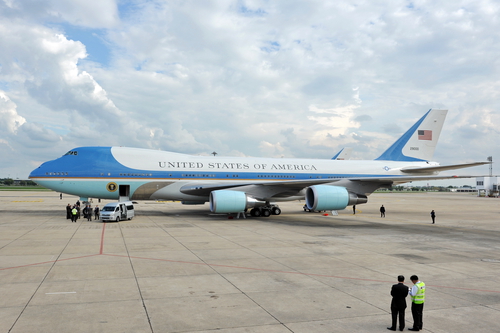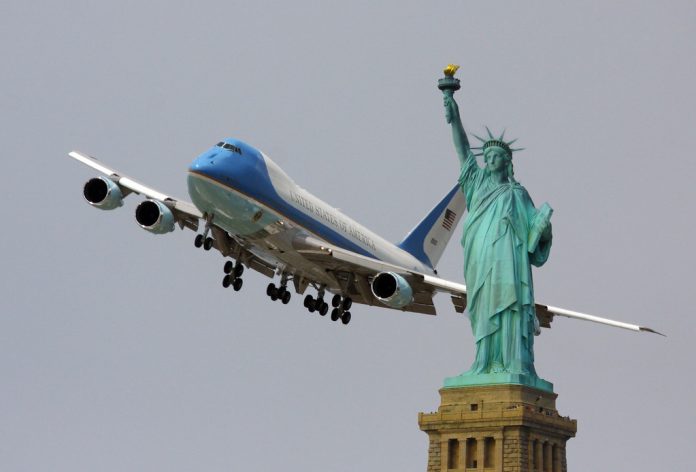
In the world of presidential aviation, the iconic Air Force One is a symbol of American power and diplomacy, but it doesn’t soar through the skies alone. Unbeknownst to many, a secretive shadow fleet trails the President’s aircraft, ensuring safety and continuity of government with capabilities that match the demands of the world’s most powerful office.

Whenever Air Force One is deployed for presidential travel, meticulous planning and a cadre of support aircraft accompany the renowned Boeing 747-200Bs. While the eyes of the world are fixed on the movements of the Commander-in-Chief’s plane, a C-17 Globemaster operates just steps ahead.

This heavy-lift transport plane, vital in the United States Air Force (USAF) arsenal for tactical missions, is laden with the President’s limousine, Secret Service vehicles, and other essential equipment for seamless presidential operations.

The C-17’s roots date back to the 1970s, aiming to replace the Lockheed C-141 Starlifter and shoulder some duties of the Lockheed C-5 Galaxy. The first C-17 took flight in 1991, showcasing the culmination of strategic design and engineering to meet military needs.

Alongside the C-17, an E-4 Doomsday plane is always on the ready, acting as a nuclear bunker and mobile command center. This Boeing E-4, modified from the Boeing 747-200B, is a product of the Cold War’s National Emergency Airborne Command Post (NEACP) program. With at least one fully crewed E-4 on standby 24/7, this aircraft is a testament to the United States’ preparedness for any contingency.

The inception of a specialized aircraft for presidential travel dates back to World War II, with the intention of ensuring secure and reliable transportation for the President to pivotal meetings, such as the Yalta Conference in 1945.

Franklin D. Roosevelt’s need to engage with other world leaders during critical times led to the creation of a dedicated call sign, “Air Force One,” which was established after a 1953 incident involving President Dwight D. Eisenhower.

The livery of Air Force One, as we recognize it today, was commissioned by President John F. Kennedy in 1961, seeking the expertise of industrial designer Raymond Loewy to craft its distinct appearance.

The attention to detail in the President’s air travel extends to additional, less conspicuous aircraft. A quartet of Boeing 757s, dubbed the shadow fleet, operates discreetly, providing transportation to destinations with smaller runways and serving as a backup should the primary aircraft require it.

These shadow planes, although shrouded in secrecy, are part of the Presidential Airlift Group and are based at the high-security Air Force One complex at Joint Base Andrews.

The stealthy nature of the shadow fleet is not only maintained by their less prominent presence but also by their elusive procurement and operations history.

With no public debate or detailed records of their acquisition, these 757s represent a unique chapter in the annals of presidential aviation. They were likely sourced from the secondhand market after Boeing ceased production of the 757 in 2005, obtaining new life as integral components of the presidential travel apparatus.

The significance of these aircraft extends to their interior configurations, replete with state-of-the-art communications systems, and their ability to operate under the call sign “Air Force One” when the President is aboard.

Despite the changing faces in the Oval Office, the shadow fleet remains a constant guardian, upholding the uninterrupted function of the highest office in the land.

As the President’s aircraft and its escorts trace routes across the globe, they do more than transport a leader; they carry the weight of national security and the ever-watchful eye of the United States, ready to face any challenge, anywhere, at a moment’s notice.

